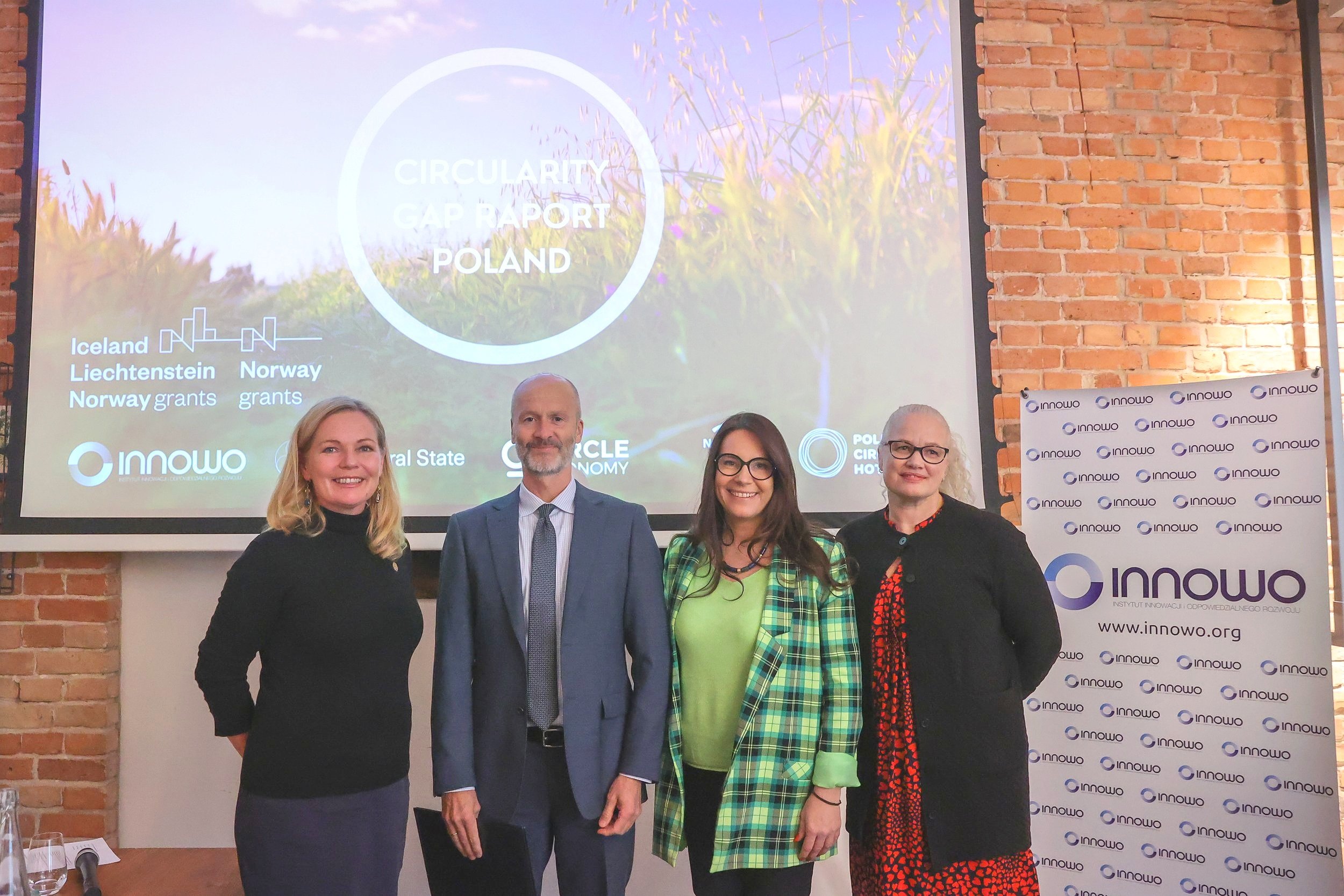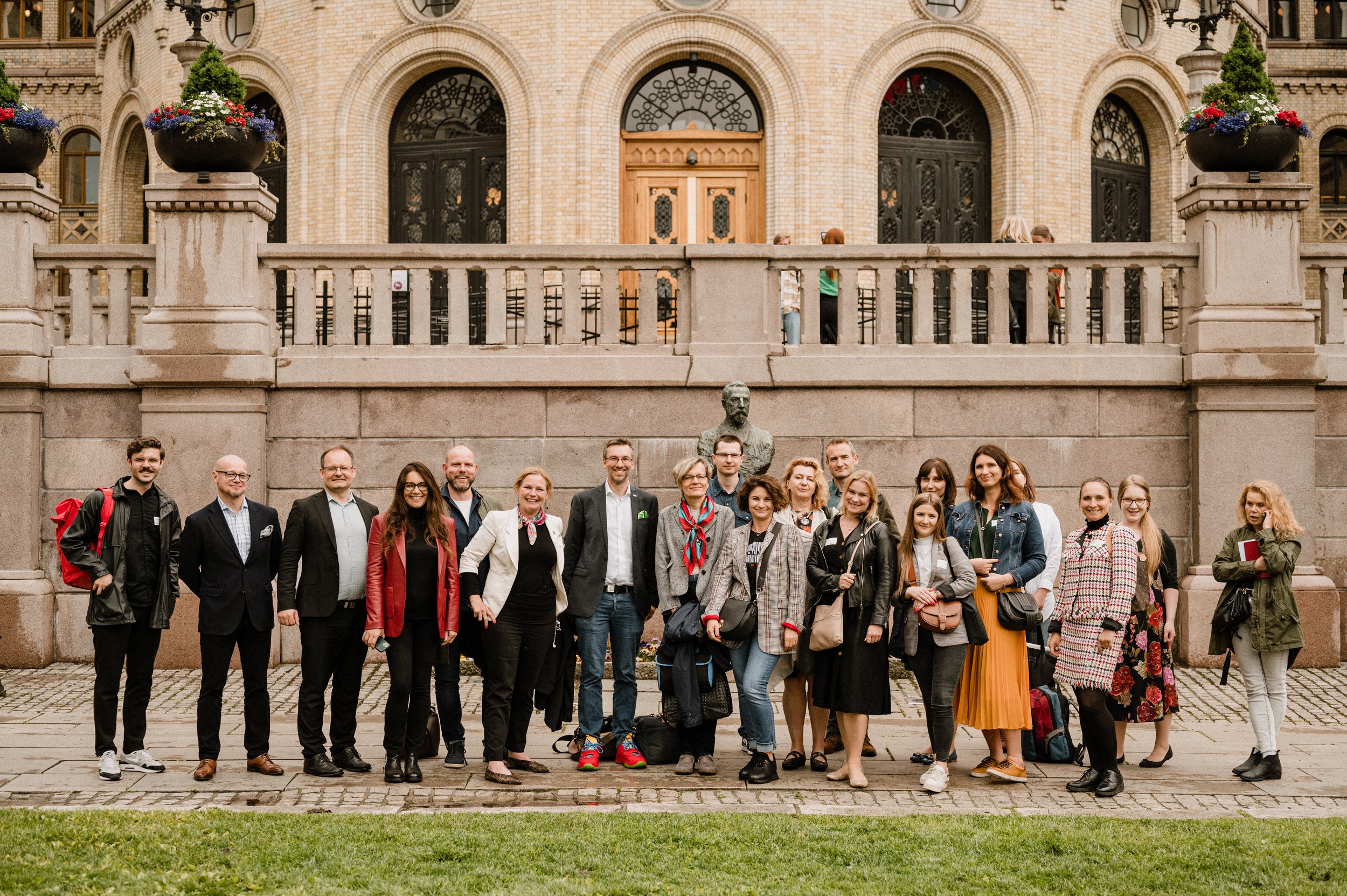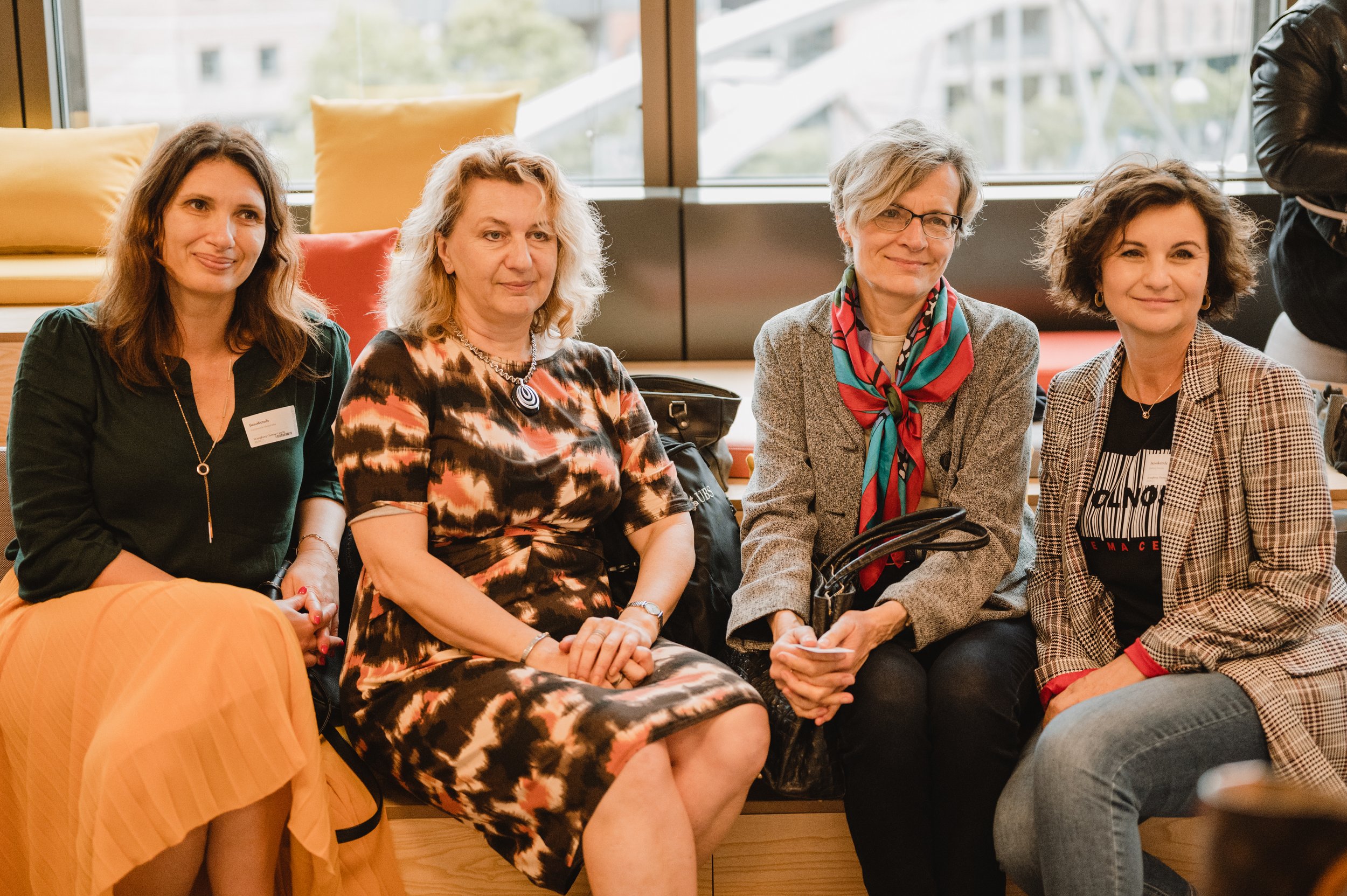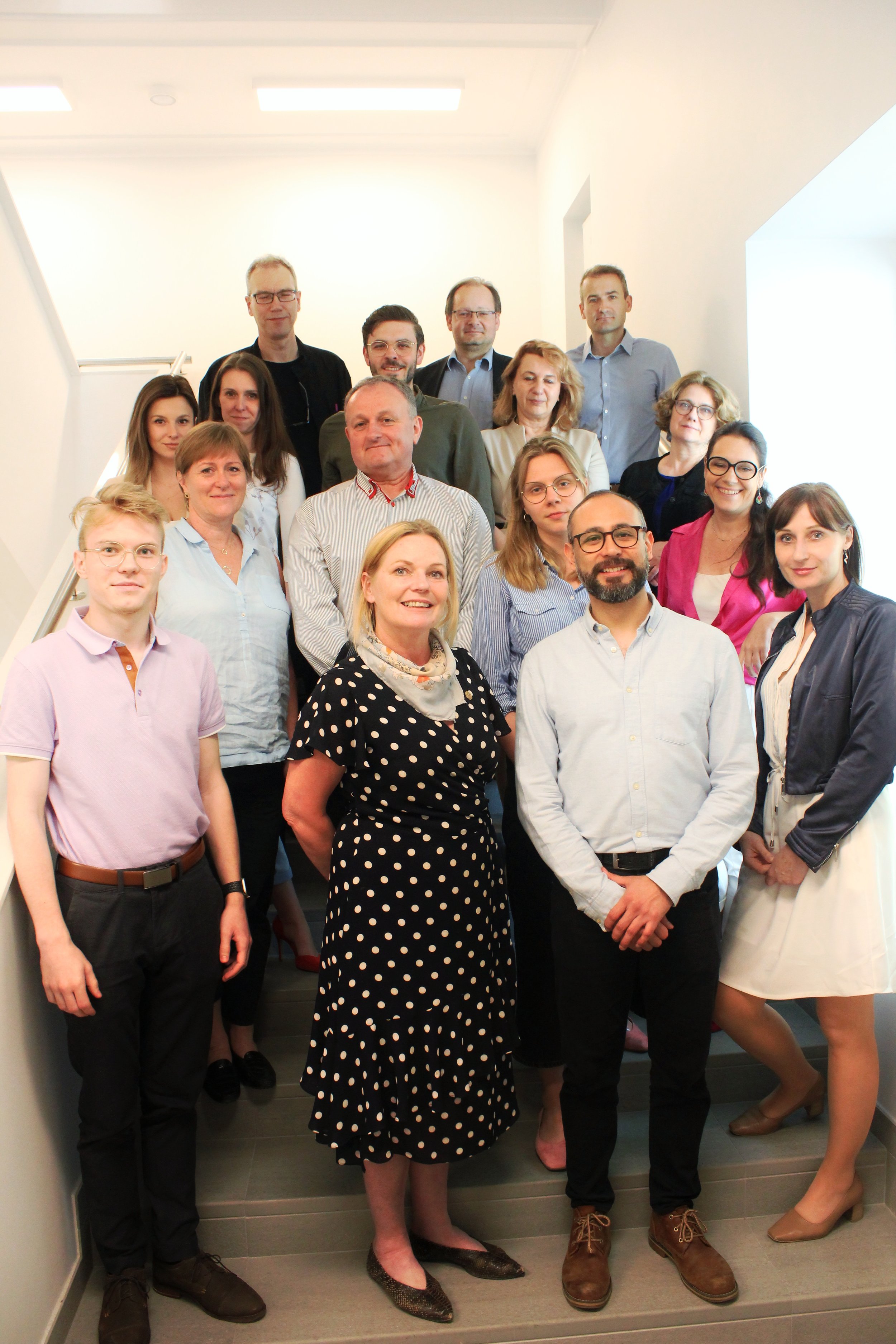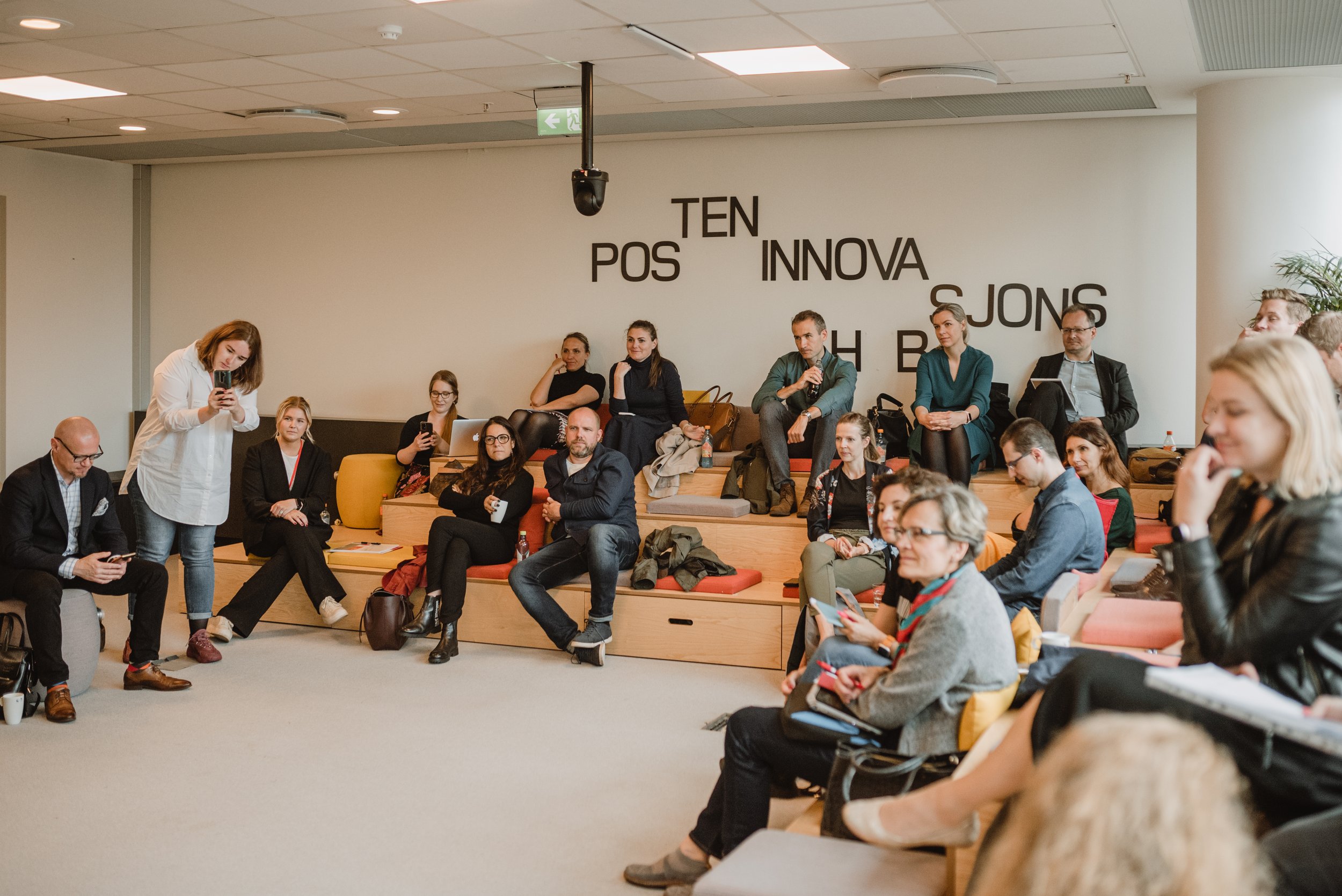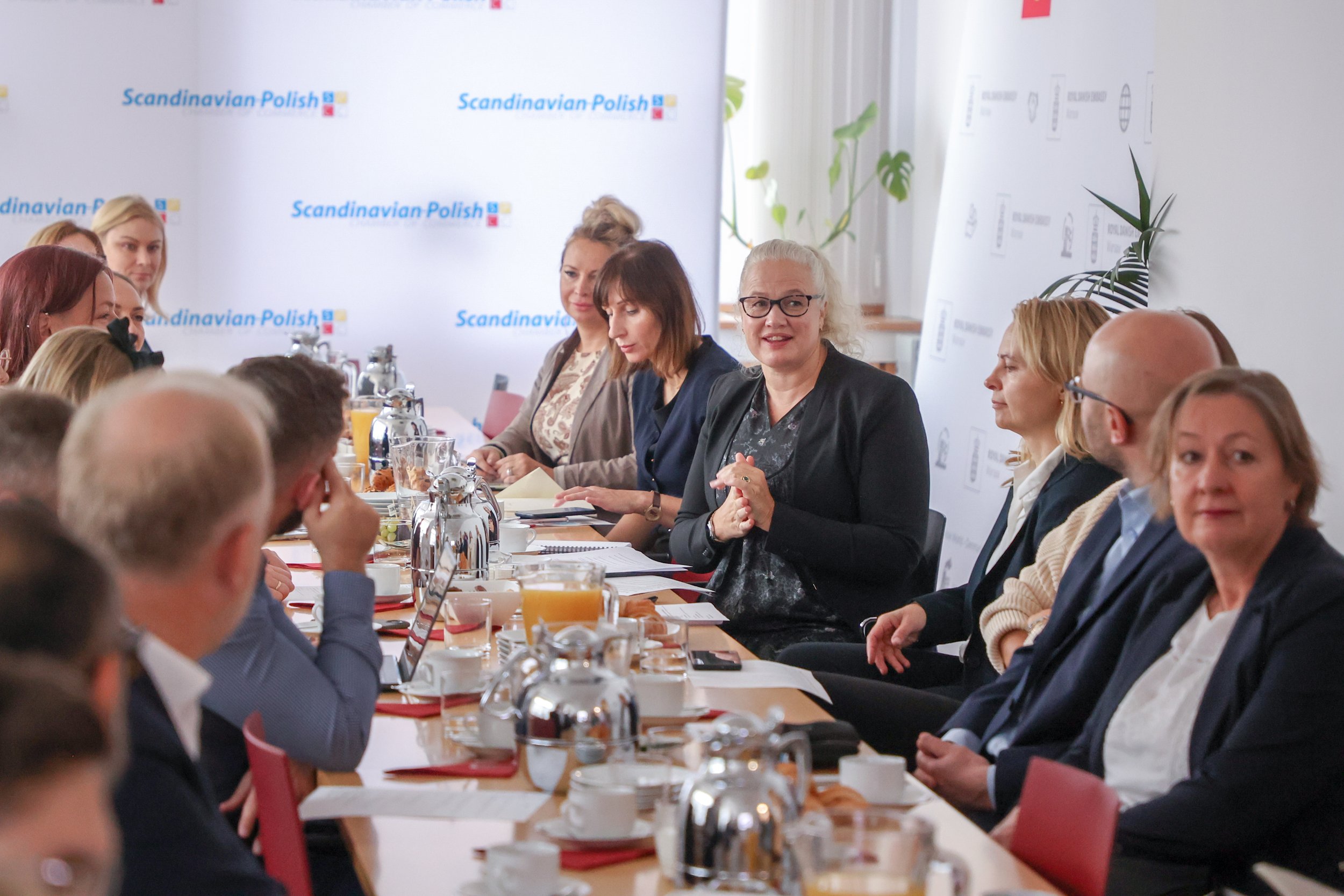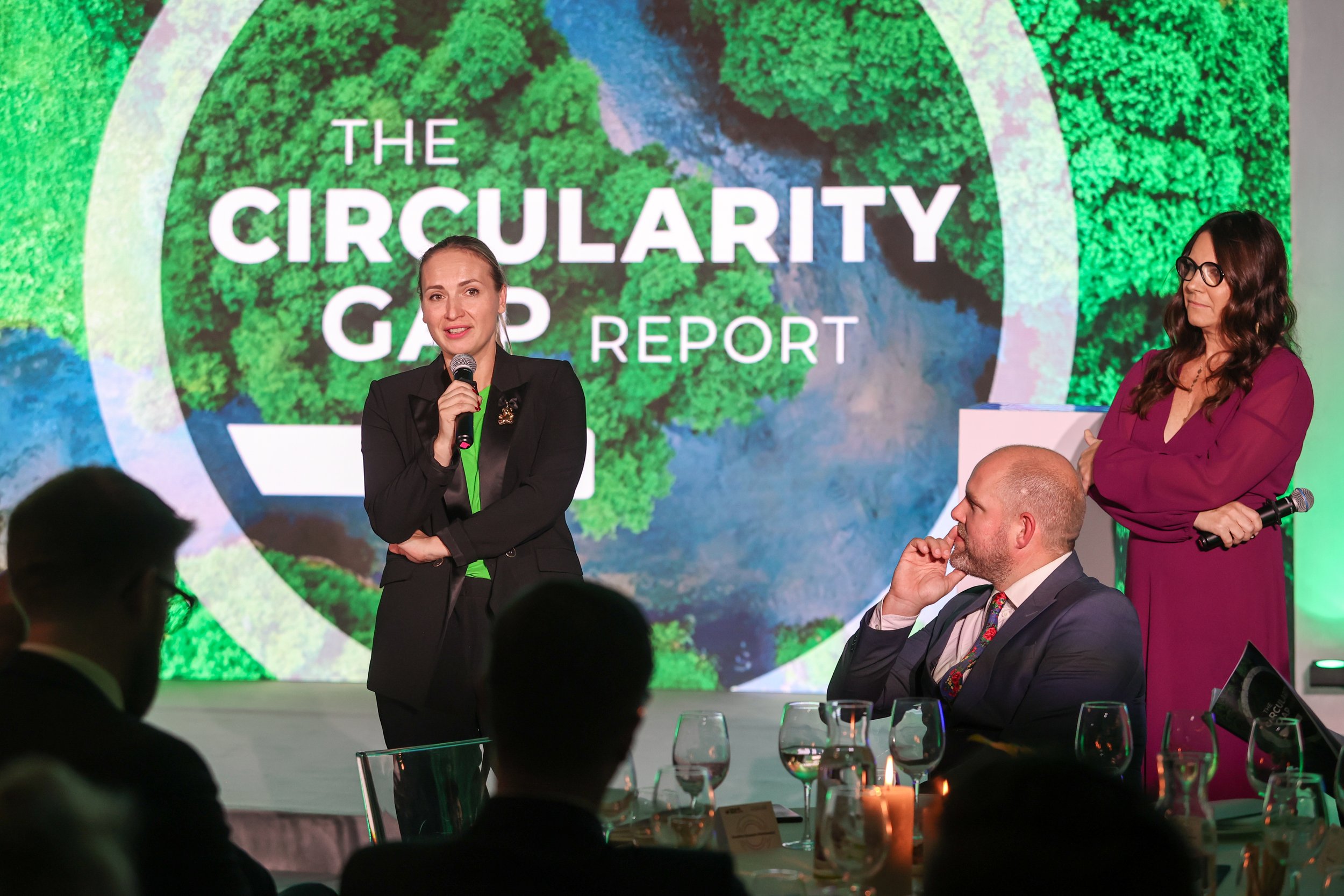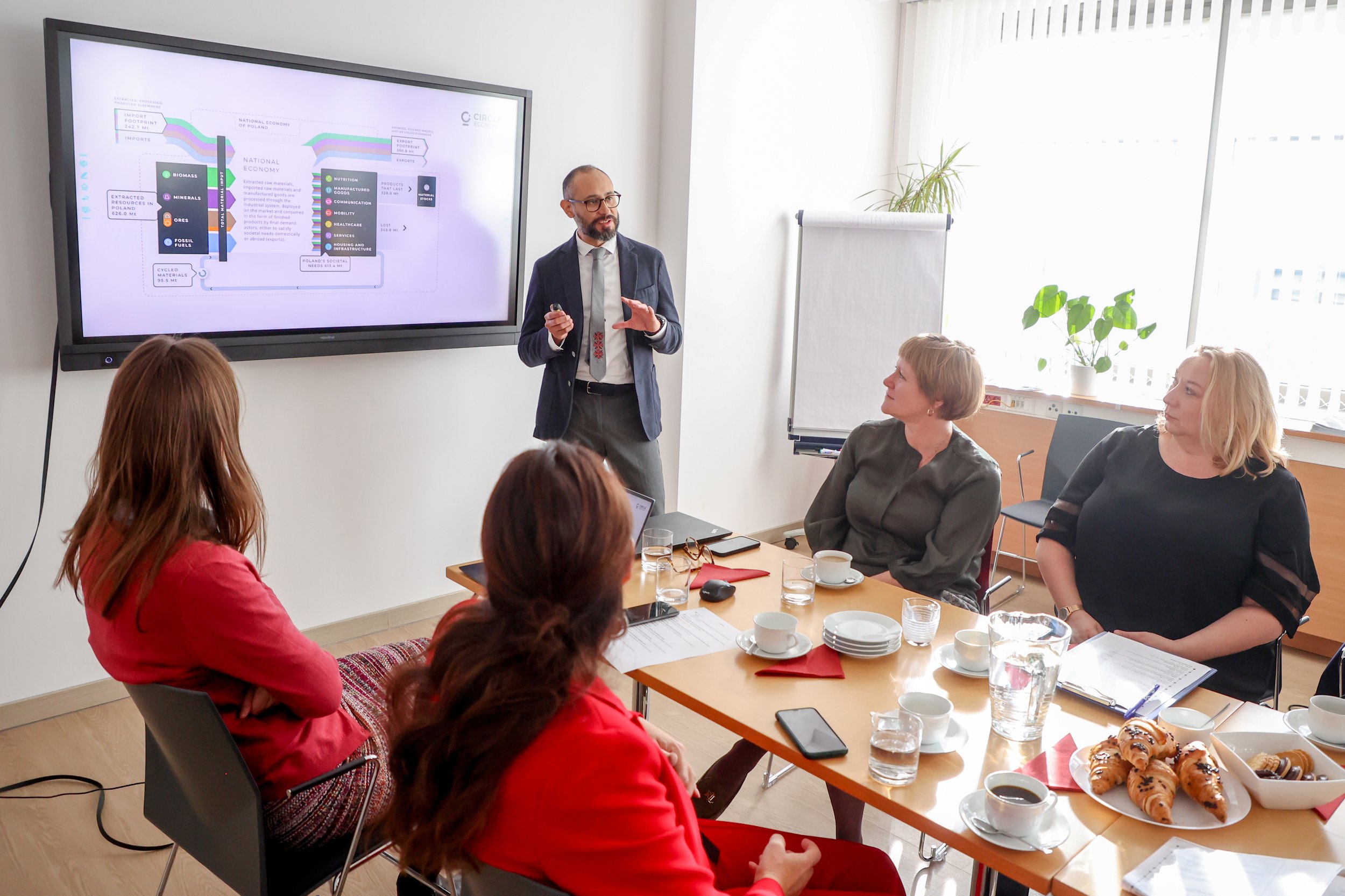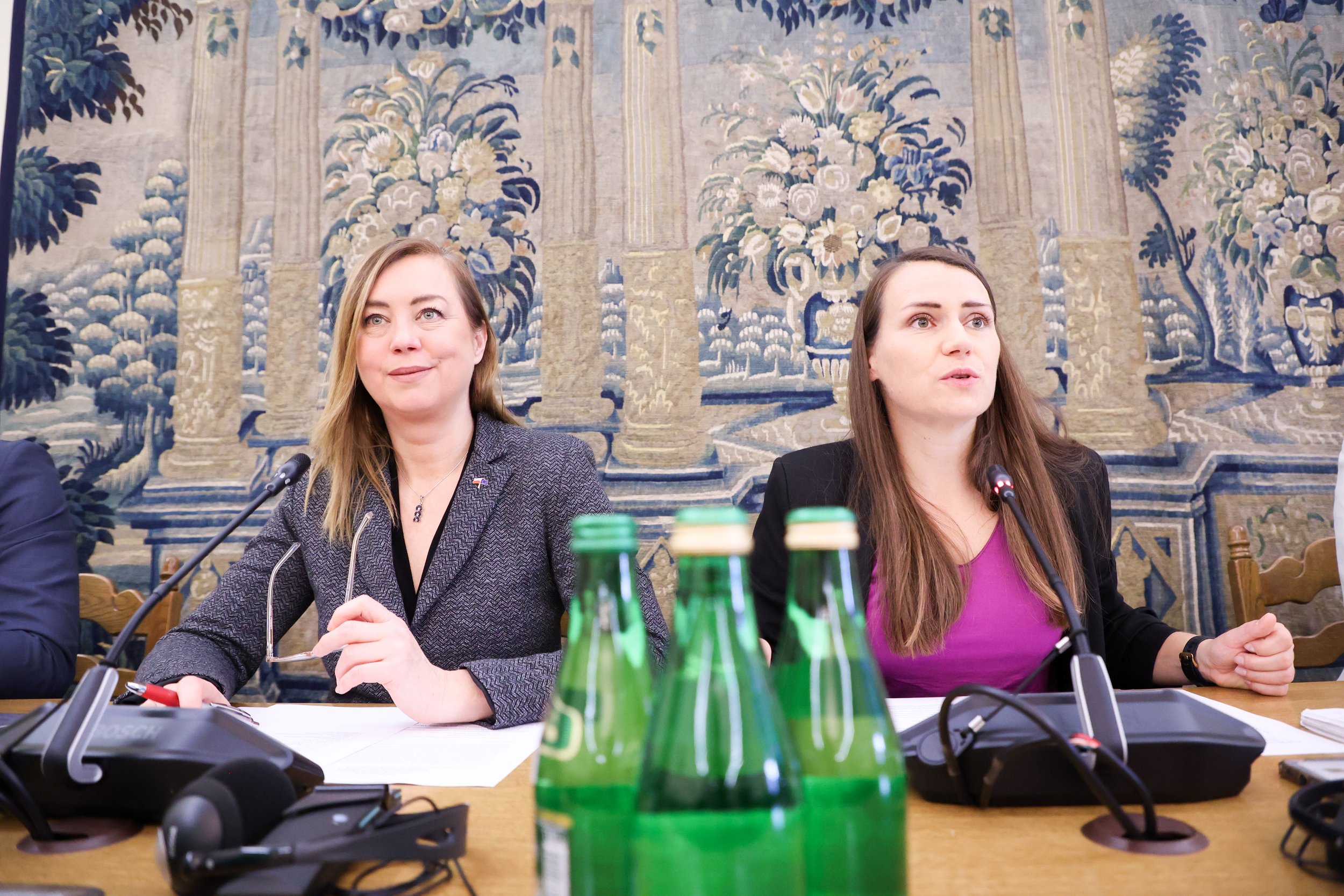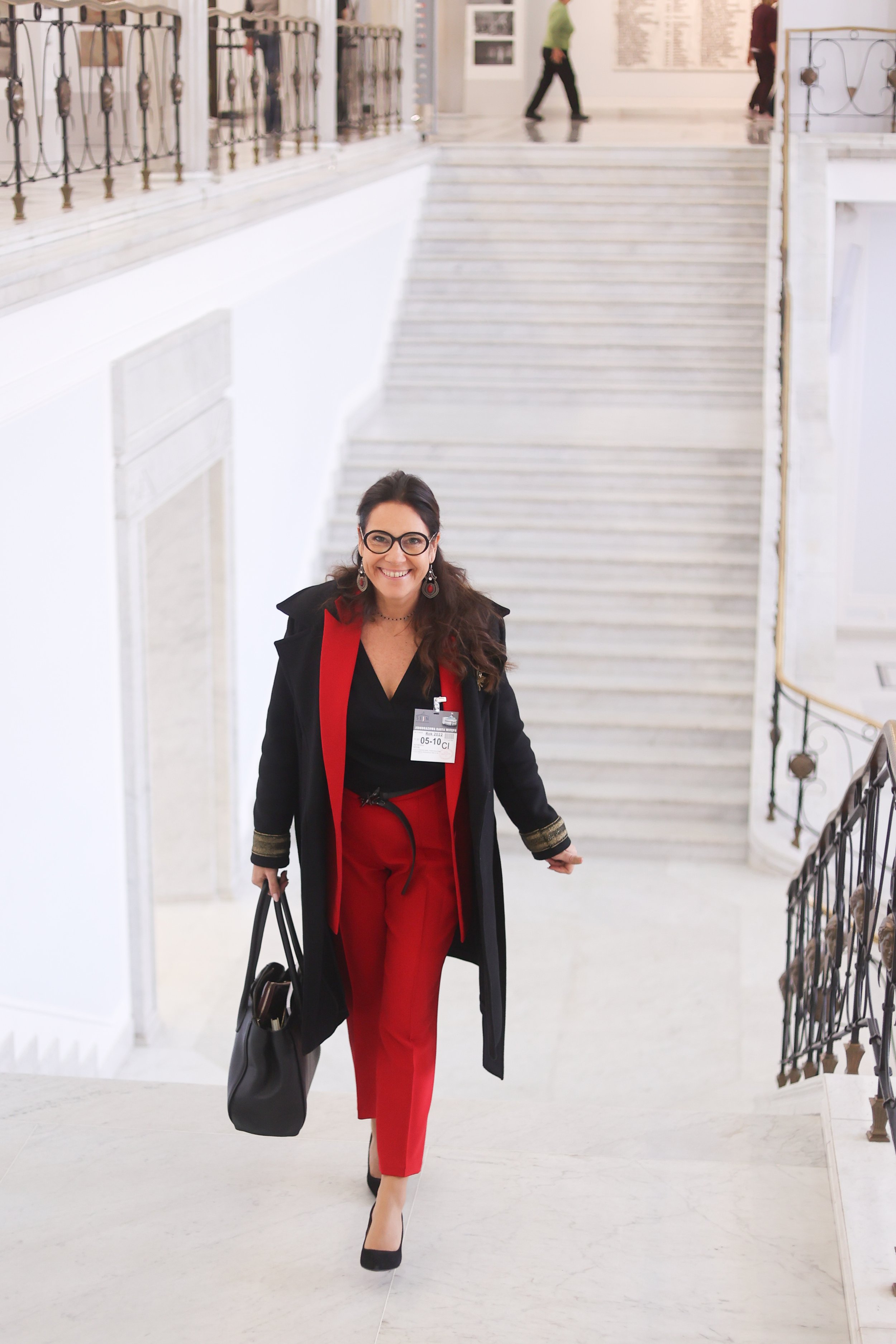Circularity Gap Report Poland: What does it take to measure the circularity of a country?
In the case of Poland, it took a year of work and a dedicated team of experts—together with a whole network of international collaborators, not only from Poland, but also from Norway, the Netherlands, and beyond.
Circularity Gap Report Poland is a concrete example and an excellent illustration that the circular economy, more than any other economic model, requires openness, communication and cooperation across borders, silos and sectors. While every country has their own unique story, circularity sets out to resolve global challenges, requiring also global involvement in the solutions.
The report was launched on the 5th of October, 2022, at the Circular Week in Poland. It showed that Poland’s economy is 10.2% circular with approximately 90% of resources coming from virgin sources. The project was realised in collaboration by Innowo, Circle Economy and Natural State and made possible by the support of the EEA and Norway grants programme. The Circularity Gap Reporting initiative aims to illustrate countries’ resource realities, showcasing how they consume materials—and what happens to them at the end of use. Carlos Pablo Siguenza from Circle Economy introduced the report, noting that:
“Every country has a story to tell—and is unique. The report provides a snapshot of Poland with all the materials that flow through the country in one year, imported and exported…and at the end, Poland has a higher circularity than the world average of 8,6%.”
The CGR Poland explored a new approach to measuring national circularity with a unique collaboration-oriented process. Throughout the project, the project partners focused on creating bilateral relationships across Poland and Norway with the aim of exploring practical possibilities for closing the resource loops between these two countries. The report identified high potential for action in industries and sectors such as housing and the built environment, mobility, agrifood and waste, consumer goods and new business models and energy. Further to this, compatibility could also be found in specific topics such as textiles, offshore and capacity building.
Circular Week, organised by Innowo, provided the ideal backdrop for launching the report with a broad arena of events and engagements. The first of these was a pre-launch dinner hosted by the Royal Norwegian Embassy in Warsaw with the ambassador Anders Eide—followed by a bilateral circularity seminar hosted by the Scandinavian-Polish Chamber of Commerce (SPCC) together with Natural State and the Nordic Circular Hotspot. The report was also presented at the Polish parliament before the international launch event online. The conversation continued at the renowned Mazovia Circular Congress which, as a testimony to the bilateral relations fostered by the CGR Poland, included a number of high-level Norwegian representatives who were eager to share their knowledge and experiences of the circular economy.
The issues are global but the starting points are unique
Perspectives on circularity are heavily impacted by the socio-historical background and lived experiences of a country. Norway has, for much longer than Poland, imported everything. As a nation, it does not lack resources but has an extremely high cost of labour, nearly no local production and a business structure that relies heavily on b2b models. Poland, in comparison, has a much more recent sharing society built on local production. The nation has gone through radical social and structural changes since the collapse of the Soviet Union in 1991. After the end of the communist era, development and changes have been rapid.
History shapes how we as societies consume and view consumption. In Poland, the collective memory of the lack of resources and lower living standards during the communist era is still felt throughout society. This ensures an appreciation of what is there and a skill to use resources to the fullest—however, this circular thinking was born from necessity and not out of choice. In many ways, this in itself presents a challenge, as the liberation to own and to consume is still perceived as a luxury and a freedom. Therefore, offering models that focus on limiting consumption can be seen as taking a step back and downgrading to a less progressive time. This makes it important to focus on circularity as an improvement on quality, not quantity, as Einar K. Holthe, Natural State, noted:
“The value of the circular economy is far larger than the cost of not doing it. Circularity will pay itself off when products have better quality. We need to scale the quality of products we have and not the quantity.”
Circularity can provide stability in the face of uncertainty
Circularity is often mistakenly taken as a purely environmental value focused on improving sustainability. And while this is certainly one aspect of it, it will also play a key role in how we plan and construct national security, quality and business development in the coming years. Circularity is a way forward, not backwards. As the recent health and geopolitical crises have shown, we need to build Europe as a self-sufficient region which can withstand disruptions to supply chains. This is where circularity comes into its own as it can dramatically decrease our reliance on external suppliers of key materials. Last but not least, over the past year, the ongoing energy crisis has been a topical motivation for this conversation, especially as Europe as a region, and Poland in particular, are moving away from reliance on Russian gas and resources.
Cathrine Barth, Natural State, summarised aptly the many faces of the circular economy:
“Circular economy is about resilience, geopolitics, collaboration, trade, local production, the insecurities surrounding us, and so much more. However, we have many proven methodologies from, for example, our partners in the Netherlands. This again goes to show that we need to keep evolving bilateral collaboration.”
There is a reason why the interest in circularity as an opportunity has skyrocketed in recent years with many more interesting opportunities left to explore and realise.
Introducing the report to the Polish Parliament
In an important role throughout the CGR Poland project has been the aim to increase knowledge of circularity on all levels. Therefore, a key part of the report launch was bringing it to the attention of not only business leaders and lobbyists but also high-level decision-makers. This was realised very concretely as the project team introduced the report at the Polish parliament on the invitation of Members of the Parliament Hanna Gill-Piątek, Andrzej Grzyb and Agnieszka Pomaska.
The beautiful parliament building in the heart of Warsaw provided an appropriately grand backdrop for the ambitious goals of the report. The CGR Poland was presented by the Dutch embassy to, among others, the Ministry of Climate and Environment during a Q&A session—inducing engaged and productive conversation, giving the delegation an opportunity to share insights and open dialogues for future bilateral opportunities. For many, opportunities the circular economy presents for strengthening national and regional resilience, as explained by Villeman Vinje from Natural State, were not only novel but highly motivating.
Where are we going next?
As Agnieszka Sznyk, Innowo, pointed out,
“This report is just a starting point, and it is interesting to work with these pan-European partnerships. I am happy to have you all aboard with so many supporting us on this journey. We have the partners to make this transformation!”
The CGR Poland is solution-oriented, offering multiple possible scenarios for lowering the material footprint and consumption levels in Poland. The report highlighted many of the major value chains with significant potential for improved circularity. However, the next steps are to explore these potentials and make concrete changes. The step from planning to implementation can be a big one, and it is important to keep building projects both bilaterally and in Poland. The CGR Poland project is already showing its practical impact with six new project applications for EEA grants that have followed from the initial collaboration. The stakeholders are now waiting for the next steps, all of which are enhancing the work that was initiated through the CGR. We will continue to keep our fingers crossed that many of the stakeholders will be able to engage in their ambitious projects and continue the work for a circular transition.
There are many options for how the roadmap for circularity can look like. New business models have to be moving from competition to cooperation. Although there are many challenges in making this a reality as there is still very much an instinct to safeguard business secrets as opposed to openly sharing knowledge. The truth is, more old-fashioned actors will find themselves falling behind fast in this market development. Or, as Villeman Vinje noted:
“The linear world is silo-oriented, whereas the circular world is matrix-like, so actors need to start thinking about how they can make connections and collaborate with new resources.”
For those who are yet to take decisive action on circularity, the CGR Poland team has one message:
“Team up! The world is changing fast with the geopolitical situation in Ukraine and the big changes in the energy market. More than ever, we need to work to build resilience, security and bring the value chains closer by making them more circular. We have to meet these changes with strong solutions and new collaborations, so team up, share your knowledge and create new local and bilateral circular projects,”
as summarised by Martin Hagen from Natural State. Thank you to all who have taken part or an interest in the project journey during the past year, contributing valuable time, resources and expertise in the creation of the Circularity Gap Report Poland.
Project website: https://cgrpolandpl.com/


